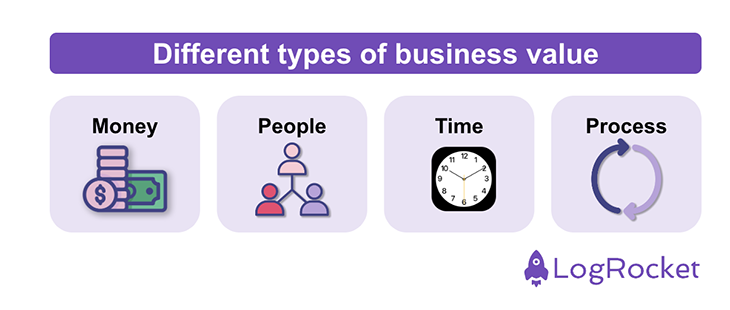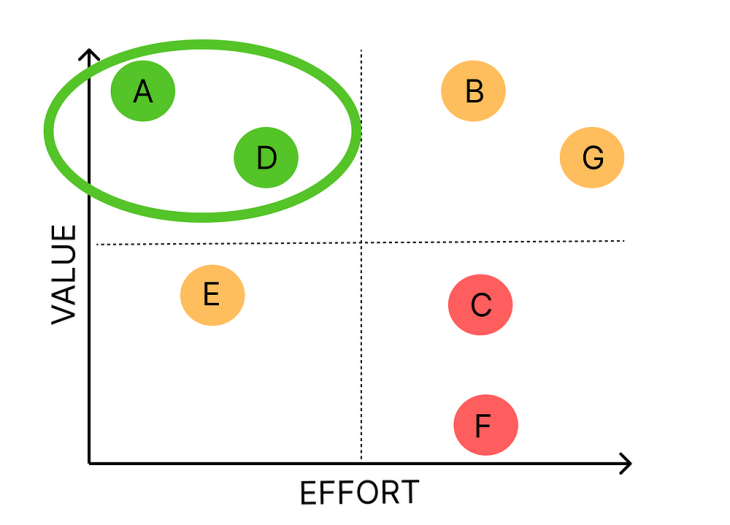Product managers are responsible for a lot. They own the product roadmap, product strategy, team priorities, and even the failures of their team. They must fully understand their problem space and the customer they are serving.

As a product team learns about problems and customers, they’ll uncover multiple opportunities — ones that can improve the customer experience and business performance, and ideally solve the customer problem.
It can be difficult to keep it all organized and feel confident the team is focused on the right thing. It is also easy to get distracted by opportunities.
Some opportunities sound fun and flashy with trends going on in the market (AI, anyone?) but may not truly be good opportunities for your specific product, problem, or customer.
That’s why setting priorities is one of the most important, and toughest, parts of the PM role. Unless you have a method for managing all the requests you receive and communicating the plan, it’s easy to start feeling like a feature factory — building features or chasing ideas that may not solve the problem or benefit your customer.
Preventing this from happening means focusing on the value of the opportunity — specifically, the business value. Let’s learn more.
Business value is the impact the opportunity will have on the business or company itself.
Business value is important because as a product team, you want to make sure that you are delivering on customer experience and also focusing on areas that will drive the business forward.
Opportunities can be direct value drivers, such as money and people, or indirect value drivers like time and process.
Value doesn’t always mean dollars. There are actually four main types of value: money, people, time, and process. We’ll look at these closer and go over the questions that you need to ask when you consider each type of business value:

This one is pretty obvious and what most people think of when they hear the word “value.” If your opportunity can directly tie to money, this is the most straightforward calculation for business value.
These are the most fun features or products to build! You can directly tie product creation to revenue. This happens a lot with teams who are working on the company website or ecommerce experience; they recognize opportunities to optimize the conversion funnel or generate more traffic to the website. More people buying means more money!
You can work directly with your SEO team to know how your changes will tie into traffic, run tests around conversion, and make a case for why something must be prioritized in relation to the amount of money it can generate for the business.
Additionally, as some opportunities are around bettering an existing process or technology, this could lead to generating business value in the form of saving money.
Upgrading services to be more scalable or downgrading packages that are no longer used are areas product teams tend to backlog as “tech debt.” These are tough to get on the roadmap, but if the opportunity size is significant, it could be a high priority in comparison to others.
Sometimes an opportunity will require upfront capital to get off the ground. Maybe it’s additional staffing or investing in a technology that hasn’t previously been used. Requesting an investment is a tough sell unless the trade-off business value, whether revenue generation or cost savings, is significant.
It’s important that when you’re looking into new ways to generate business value and getting excited about the money the opportunity will generate (or save), make sure you are including any upfront costs in that calculation.
Another direct driver of business value is when you can do more work with the same or fewer employees. This is because the product has taken on a portion of the work typically completed by a human.
When looking at efficiency, it’s important to understand the workload that exists today and get a baseline. Understand what the current capacity of your employees is.
For example, if your company currently receives 300 support tickets per day and an average employee can process 30 a day, you need 10 support employees to handle that amount of work.
If the product team can build automation that will eliminate 50 percent of that work by responding to common questions, now the company only needs to handle 150 support tickets and five employees to complete it.
As a business, you can move those employees into different roles or tasks or no longer need that amount of workers now that the work is being completed in a different way, both of which are business value drivers.
When thinking about business value, time is one of the largest value drivers. The cost of hiring additional staff can be high, so wherever a company can do more with less overhead, that is business value to explore.
There may be sales, onboarding, or support opportunities where product and process enhancements can generate time savings. These opportunities are typically high in startups or when working on new areas of the business with manual processes.
Exploring options for automation or adding process flows (instead of manual processes like spreadsheets or emails) can instantly save time and generate value.
Self-service is the name of the game. If a customer can progress on their own, they have more control over their experience and take that work off your employees.
Account setup, onboarding, or reporting are areas where opportunities to expand self-service are strong. Building tools that provide customers with ways to help themselves or understand their product success can improve retention and scale your product without additional overhead.
The cost of saving time also comes at the cost of building the product. Don’t overlook what it will take your product team to build the opportunity when calculating total time savings.
For example, say you’re looking at two opportunities for automation. Both would save 20 hours of support time per week, but one opportunity would take your product team two weeks while the other would take six weeks. Include those details when setting overall opportunity priority — the longer one may end up being more important but it’s a detail that shouldn’t be overlooked.
Similar to time and people improvements, process improvements can deliver business value.
If the current process is A to B to C but there is an opportunity to build a product taking A to C immediately, calculate what the business saves by eliminating B. This will typically be in the form of people or time, but it could also include physical space or training costs.
Your team can’t do everything. Even if you have a list of 100 amazing opportunities that will all drive business value, you have to set priorities.
Now that you have sized and understood the business value you can achieve, however, you can use that to prioritize effectively!
The easiest thing to do once you understand money, time, people, or process improvements is translate all of those into dollars. At the end of the day, the business needs to know that the investment they are making is going to generate more business.
Product managers should do this activity of collecting business value by working with their team, partner teams, stakeholders, and leadership to understand the size of each opportunity.
Let’s go through a basic example. At this point, you may find yourself with something simple like this:
| Opportunity | Value driver | Value generated (dollars) |
| Idea A | Revenue | $3,000,000 |
| Idea B | People | $1,200,000 |
| Idea C | People | $500,000 |
| Idea D | Process | $60,000 |
| Idea E | Time | $2,000,000 |
| Idea F | Revenue | $400,000 |
| Idea G | Time | $1,300,000 |
Now you may be thinking this is obvious — you should go after the opportunities that have the highest dollar amount and generate the most business value.
You could stop here, but you’d be missing a major component of why the product manager role is important; this is only one of the variables you need to consider.
The other is the level of effort. Level of effort (LOE) is how much work it is going to take the product team to deliver on that opportunity. You would work with your technology partners to understand how long it would take to build the opportunity you are looking to explore.
Many teams like to chart the value of the opportunity with the LOE on a chart to better compare across opportunities:

At this point, the product manager and team are ready to make a recommendation on what priorities need to be set. You may decide that the high-value, low-effort opportunities are the top priorities or you may look at high-value opportunities that need a bit more effort as investments that are worth making.
Now, you are ready to share results with your stakeholders and the teams that helped you gather the business value of your opportunities! You’ll use this time to get feedback on your recommendation.
Through this exercise, a product manager and their team can feel confident that they are focused on (and building) the right opportunities. These opportunities will hopefully solve the problem for their customer while also driving business value.
Featured image source: IconScout

LogRocket identifies friction points in the user experience so you can make informed decisions about product and design changes that must happen to hit your goals.
With LogRocket, you can understand the scope of the issues affecting your product and prioritize the changes that need to be made. LogRocket simplifies workflows by allowing Engineering, Product, UX, and Design teams to work from the same data as you, eliminating any confusion about what needs to be done.
Get your teams on the same page — try LogRocket today.

A practical five minute revenue estimation method to help product managers compare ideas, drop low impact features, and prioritize smarter.

A practical guide for PMs who want to stop being bottlenecks, delegate smarter, and lead teams effectively with a clear ownership framework.

Stop letting unreliable data block features. Treat data as inventory to track quality, ownership, and ship with confidence.

Learn why slide decks slow teams down and explore better tools like whiteboards, PRDs, and prototypes to improve collaboration and alignment.